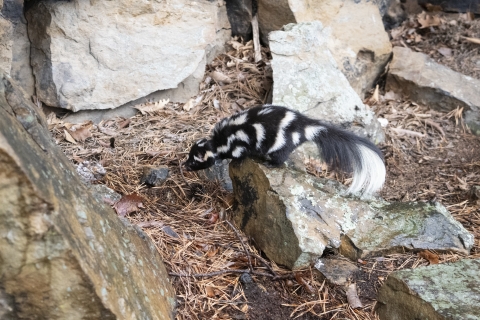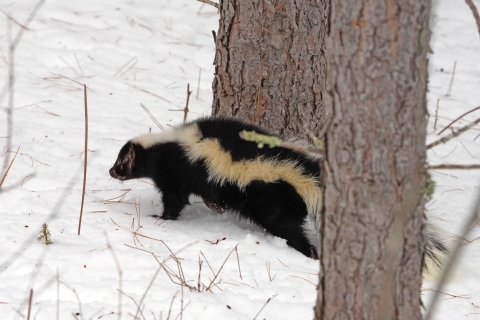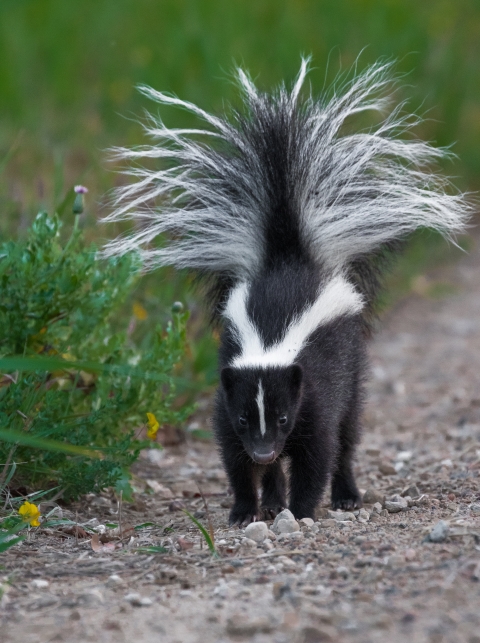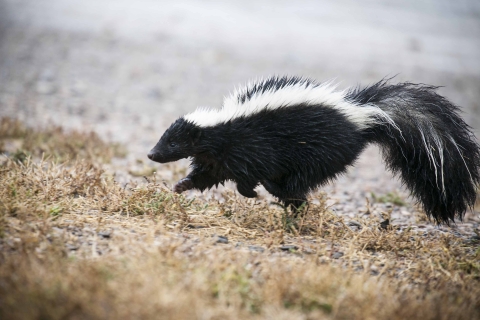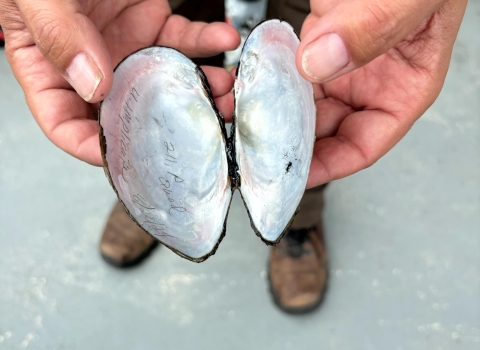Skunks, easily identified by their striking black and white fur, are among the most iconic members of the animal kingdom. Renowned for their ability to release a powerful and pungent spray as a defense mechanism, these intriguing mammals possess a captivating blend of charm and enigma. Beneath their notorious reputation lies a wealth of often overlooked behaviors and habits, creating a tapestry of mystery that adds depth to their existence. Far from the simplistic image they repeatedly evoke, skunks showcase a rich array of social interactions and ecological roles, challenging many common misconceptions surrounding them.
Skunks in Minnesota
Minnesota is home to two notable species of skunks: the striped skunk and the eastern spotted skunk, which is both smaller and very rarely seen. The striped skunk (Mephitis mephitis) is adaptable, and can thrive in various environments, including rural and urban settings throughout Minnesota. These skunks are easily identifiable by their distinctive black fur with bold white stripes running down their backs. Striped skunks are opportunistic omnivores, meaning their diet changes based on what is available to them. They have a diverse diet, including beetles, grasshoppers, moths, bees, snails, crayfish, fish, frogs, snakes, mice, squirrels, wild fruits, corn, nuts and bird's eggs which allows them to inhabit areas with a variety of food sources comfortably. When it comes to shelter, striped skunks prefer their dens to be located on slopes with good drainage and generally being short and shallow, extending a few meters in length and about a meter underground. Striped skunks utilize their strong front feet and long nails to dig for food like grubs and earthworms. In contrast, the eastern spotted skunk (Spilogale putorius) prefers more specialized habitats. Typically found in open landscapes that include cover, these skunks favor thickets, dense brush and riparian riparian
Definition of riparian habitat or riparian areas.
Learn more about riparian woodlands, or treed areas along rivers or streams. In agricultural regions, they seek out human-made shelters such as barns, outbuildings, corncribs, trash piles, rock piles and haystacks for cover and nesting. Overall, skunk dens usually have one to five well-hidden entrances and one to three rooms.
Seasonal routines
As winter approaches, skunks in Minnesota need to conserve energy and survive the colder temperatures. Skunks do not hibernate like some other animals, instead entering a state called torpor. Torpor conserves energy just like hibernation and lasts less than 24 hours at a time. During particularly cold spells, skunks will sometimes gather in communal dens, seeking the warmth and comfort of shared shelter. This social behavior is mostly limited to these chilly periods and the mating season, as skunks are primarily solitary animals. They typically prefer their own company, foraging for food and exploring their surroundings independently rather than in groups, which they can be seen doing on warmer winter days. Skunk breeding season takes place in late February through March, with the females giving birth to their young in May. Litters typically consist of four to six kits, which are born blind and helpless. The mother provides care and sustenance, and the young are weaned after about two months. After three months, they begin to disperse, marking their transition into independence as they start to explore their surroundings and find new territories.
Protection at all costs
One of the most notorious aspects of skunk behavior is their formidable defensive spray, which is produced by specialized glands near the base of their bushy tails. When feeling threatened, skunks display a distinct posture: they elevate their tails high and release a pungent spray that can project distances up to 15 feet. This strong-smelling spray, with its distinct sulfuric odor, serves as a powerful deterrent for predators, effectively keeping potential dangers at bay. Containing thiols, these sulfur-containing compounds are responsible for the spray's intense odor and are highly flammable, posing unique risks beyond their offensive scent. These intimidation tactics play a vital role in the skunk's defense strategy. Once a skunk releases its notorious spray, it is left vulnerable and defenseless for nearly 10 days as it refills those glands, highlighting the importance of its spray as a last resort in encounters with predators. Despite this striking defense mechanism, skunks are generally gentle and non-aggressive creatures, preferring to avoid conflict whenever possible. They may exhibit warning behaviors, like stomping their feet or raising their tails, signaling their intent to deter rather than attack.
Skunks lend a helping hand
Skunks play a crucial role in their ecosystems and contribute to the balance of the environment in several ways. One of their primary functions is as pest controllers; by feeding on various insects, skunks help to keep populations of harmful pests in check, which can reduce the need for chemical pesticides in agricultural areas. Skunks are foragers, consuming a wide range of foods such as fruits, nuts and carrion, helping in seed dispersal and nutrient recycling. When skunks eat fruits and nuts, they inadvertently spread seeds through their scat, or animal feces, promoting plant biodiversity and contributing to healthy ecosystems. Their scavenging behavior also aids in cleaning up the environment by consuming carrion and decaying organic matter, which helps prevent the spread of disease and promotes decomposition. Furthermore, skunks serve as prey for larger predators in the food chain. Overall, their presence supports biodiversity and indicates a healthy environment. Skunks are important for pest control, seed dispersal and as a food source for other wildlife, all of which underscore their significance in maintaining ecological harmony.
Living with skunks doesn't actually stink
Through humane and responsible management practices, we can ensure that skunks continue to thrive in their natural habitats while respecting the needs and safety of humans. Skunks are frequently associated with their unmistakable, pungent spray and their striking black-and-white fur, yet there is a rich and intricate world beneath this surface-level perception. These small mammals possess a variety of interesting traits, from their fluffy tails that they raise on display to their curious, playful nature when foraging for food. By fostering education and raising awareness about their roles in the ecosystem, we can adopt responsible wildlife management practices that pave the way for a harmonious coexistence. Recognizing the valuable impact wildlife has on our homes and the surrounding environment not only enhances our appreciation for these creatures but also encourages a more balanced approach to living alongside them.
We invite you to explore public lands in Minnesota and search for signs of skunks at work. Keep an eye out for distinctive holes in the ground, typically measuring two to three inches in diameter, which indicate where these clever animals have been digging for delicious grubs and insects. Additionally, look for their tracks—small footprints featuring five toes and sharp claws that leave a unique imprint on the soft earth. This is a perfect opportunity to connect with nature and observe the fascinating behaviors of these unique animals!


